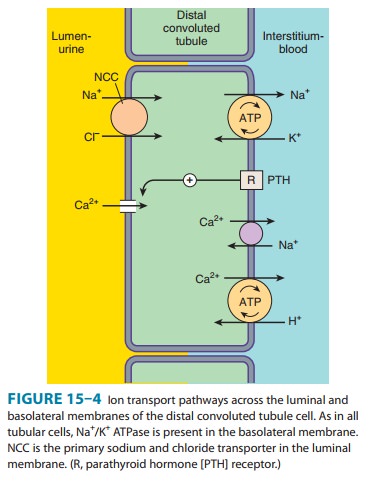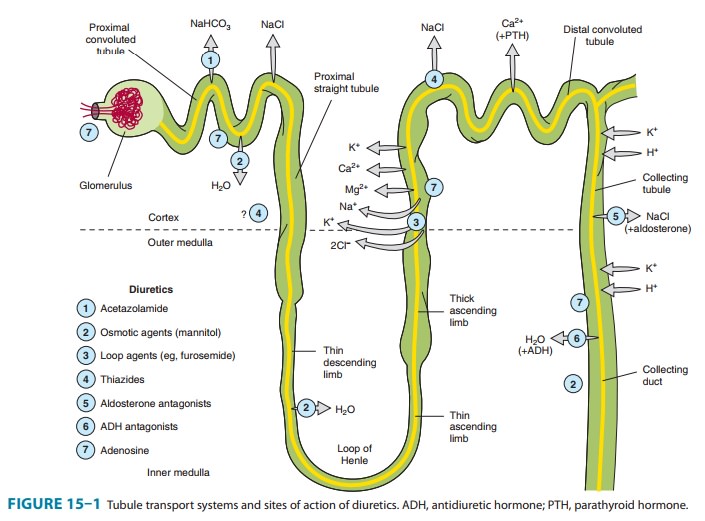Chapter: Basic & Clinical Pharmacology : Diuretic Agents
Distal Convoluted Tubule - Renal Tubule Transport Mechanisms
DISTAL CONVOLUTED TUBULE
Only
about 10% of the filtered NaCl is reabsorbed in the distal convoluted tubule
(DCT). Like the TAL of Henle’s loop, this seg-ment is relatively impermeable to
water, and NaCl reabsorption further dilutes the tubular fluid. The mechanism
of NaCl trans-port in the DCT is an electrically neutral thiazide-sensitive Na+ and Cl−
cotransporter (NCC, Figure 15–4).
Because
K+ does not recycle
across the apical membrane of the DCT as it does in the TAL, there is no
lumen-positive potential in this segment, and Ca2+ and Mg2+ are not driven out of
the tubular lumen by electrical forces. Instead, Ca2+ is actively
reab-sorbed by the DCT epithelial cell via an apical Ca2+ channel and
basolateral Na+/Ca2+ exchanger (Figure 15–4). This process is regulated by
parathyroid hormone.


Related Topics